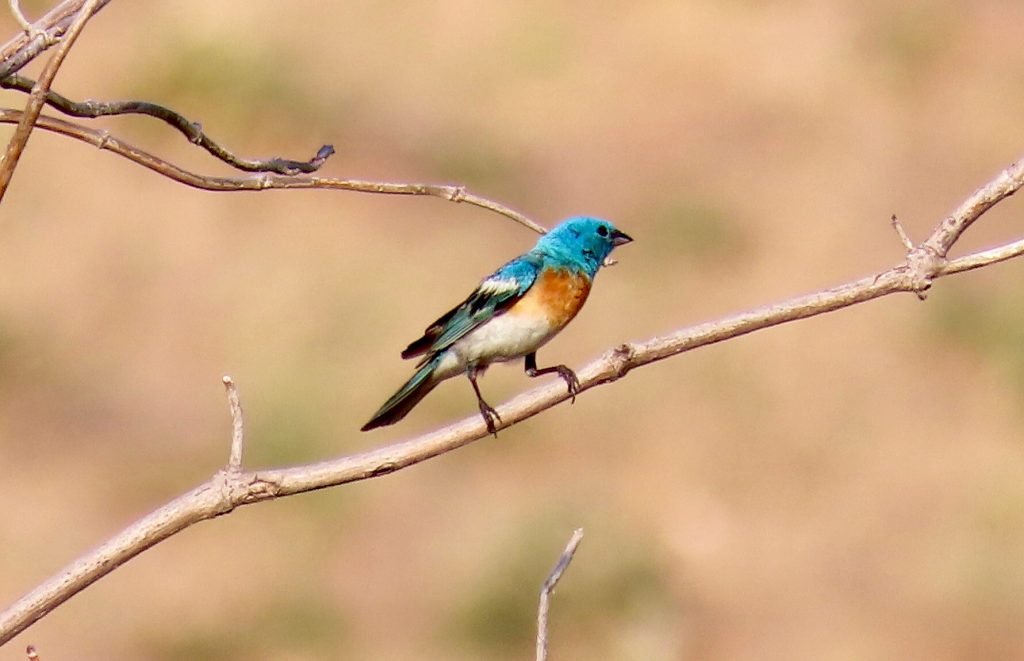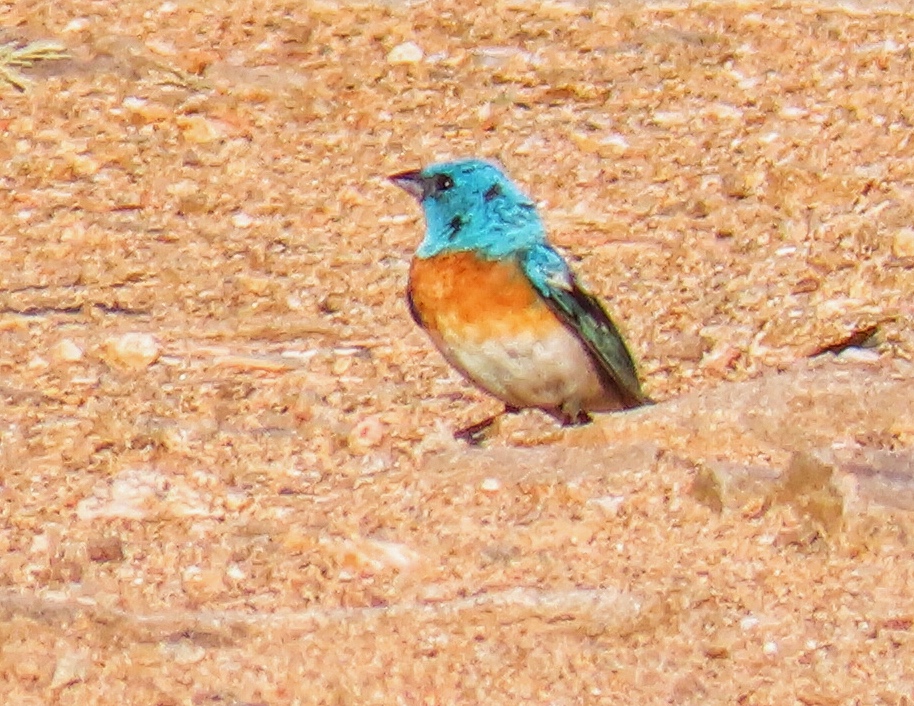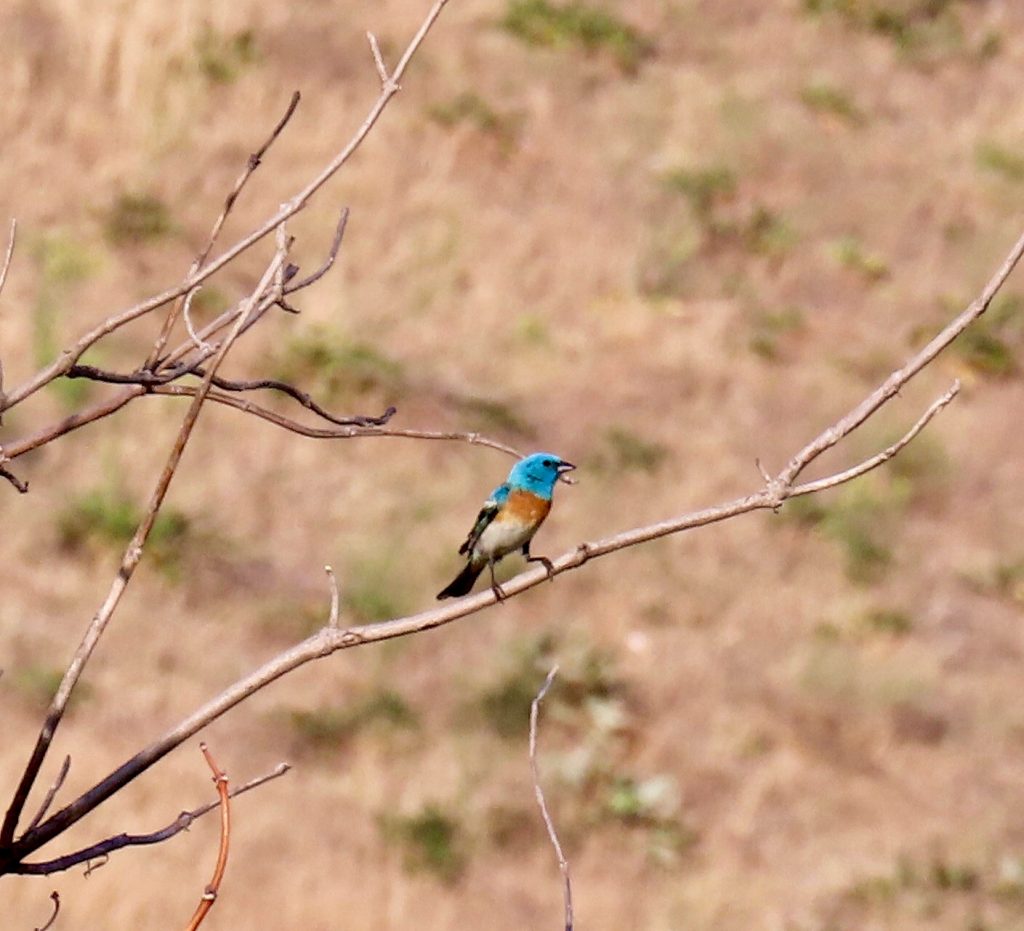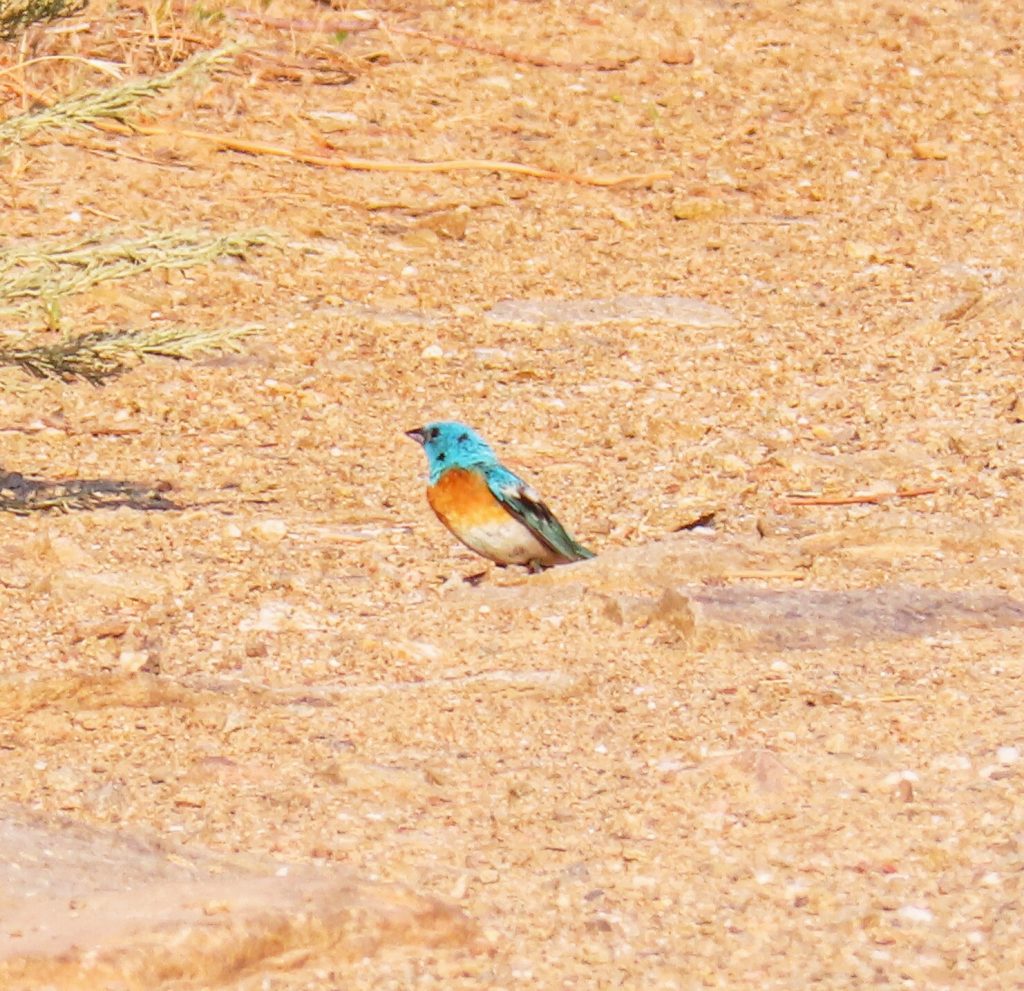
Male Lazuli Buntings are eye catching birds which really stand out in their usual breeding habitat of dry, shrubby, open areas, although for those with better hearing than mine it will possibly be the song that is noticed first, for these birds are extremely vocal during the breeding season, especially during the warmer times of the day when few other birds are singing. Superficially similar to Western Bluebirds, male Lazuli Buntings can be readily distinguished from them by their white wing bars, sturdy conical beak, and lighter blue plumage.
Females are trickier, and I must confess to never having positively identified a female Lazuli Bunting. They have an unstreaked brown back, unstreaked buffy chest, and the same white wingbars and thick conical beak as the males.
Lazuli Buntings usually begin to arrive in the southern parts of our region in late April, and most of them have left for their wintering grounds in Mexico by the end of August. During both spring and fall migration they may be found region wide, but during breeding season they are more common east of the Cascades in shrubby riparian areas, although they can be found on the westside in open, shrubby areas near water. They do not appear to like forested areas.
They are omnivorous, feeding on seeds, berries, and insects, and will sometimes ‘hawk’ insects from perches, glean bugs from limbs, and perch on the stalks of seed bearing plants.
The male Lazuli Bunting shown here was photographed in Swakane Canyon, Chelan County, Washington.

https://www.allaboutbirds.org/guide/Lazuli_Bunting/overview
https://www.audubon.org/field-guide/bird/lazuli-bunting
Size- 5.5” tall.
Habitat- Open shrubby areas near water.
Range- Region wide during migration. More common east of the Cascades during breeding, but also found on the westside.
Eats- Seeds, berries, insects.
Flight Season- Usually arrives in late April, and departs for its wintering grounds in Mexico by the end of August.

